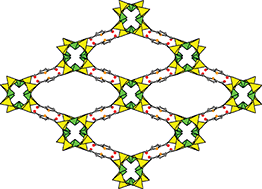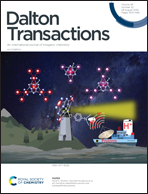A thio-functionalized zinc phosphite with a large-channel framework and enhanced removal ability of mercury ion from aqueous solutions†
Abstract
The first example of a thio-functionalized zincophosphite material (NTOU-2S) incorporating the 2,5-thiophenedicarboxylate (TPDC) ligands was synthesized using a hydro(solvo)thermal method and structurally characterized by single-crystal X-ray diffraction. Interestingly, the perspective view of the crystal structure for NTOU-2S is similar to our previous report of NTOU-2 but the carboxylate organic ligands (TPDC for NTOU-2S; 1,4-benzenedicarboxylate, BDC, for NTOU-2) in both compounds adopt different types of bis-monodentate coordination models (the unusual cis bonding versus a trans linkage) to bridge the metal atoms of inorganic tubes in the formation of large-channel zincophosphite frameworks, resulting in structural and functional diversities. The thiophene-based compound also displayed higher thermal stability and removal ability for the softer Hg2+ cations from water solutions than the performance of sulfur-free NTOU-2. In addition, the synthesis, structural characteristics, removal properties of heavy metal cations, and thermal and chemical stabilities for both compounds were also reported.



 Please wait while we load your content...
Please wait while we load your content...